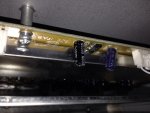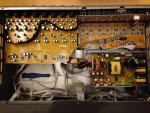Re: NAMM
For a long while, they had a proposal for a 16 channel desk that had solely an iPad for its control surface, similar to the Mackie one. Then it disappeared. Maybe it will come back in a new form, although I guess for our purposes the Rack is the same thing and has the familiar layout and features for us X32'ers.
Yes, except by that logic the X32 should have been a Midas brand at a higher price point than Behringer, which I don't think would have made it the game-changer that it is.
I'd be happy if the 48 channel game were changed, too.
What do you mean referring to "16-channel X32"?
For a long while, they had a proposal for a 16 channel desk that had solely an iPad for its control surface, similar to the Mackie one. Then it disappeared. Maybe it will come back in a new form, although I guess for our purposes the Rack is the same thing and has the familiar layout and features for us X32'ers.
Also, I was asking about the hypothetical "X48" desk number of times. Seems like it's doable, there's definitely a gap between X32 and the smallest Midas Pro 1, so it's up to Uli who will fill it, Midas or Behringer brand. From business standpoint a smaller Midas desk makes more sense, it can have higher price tag than beefed-up X32 (Midas Pro 1 is actually already smaller and simplier desk than X32, probably costs less to produce and can be bumped to 48 channels from current 40, it's all about software, all small Midas Pro desks share the same central computer).
Yes, except by that logic the X32 should have been a Midas brand at a higher price point than Behringer, which I don't think would have made it the game-changer that it is.
I'd be happy if the 48 channel game were changed, too.


